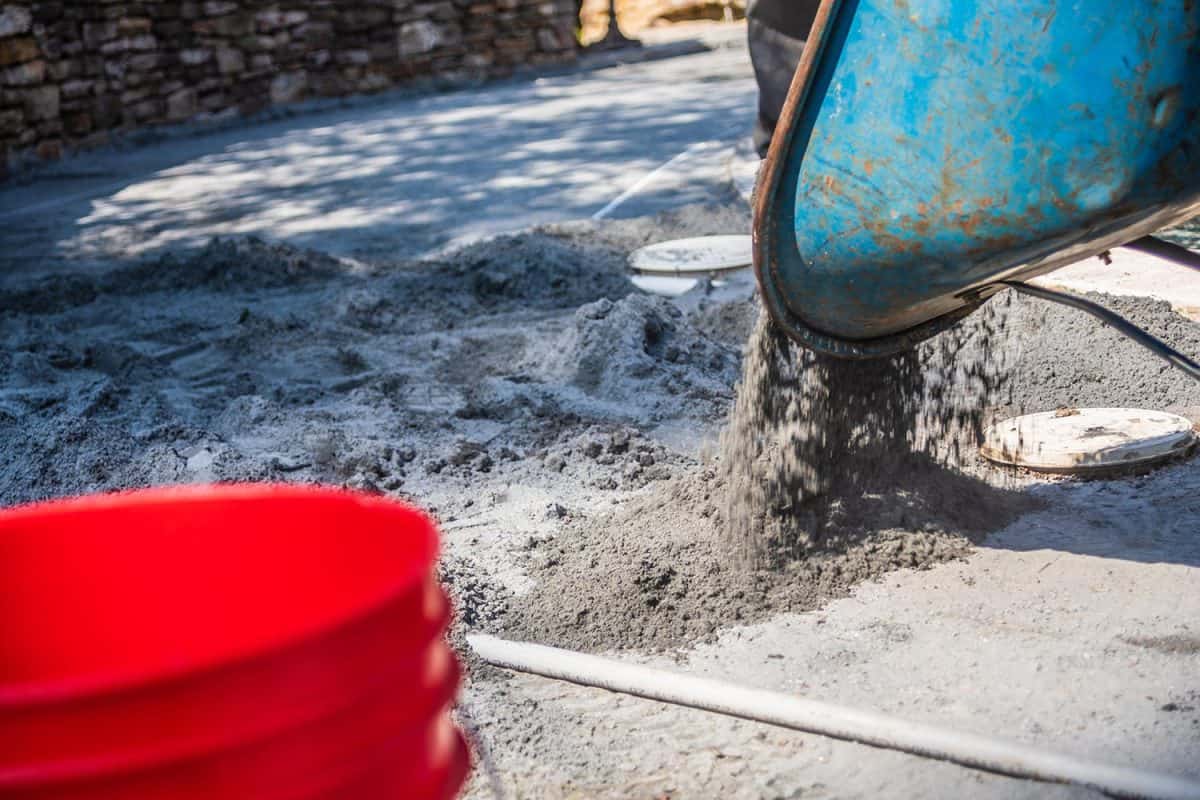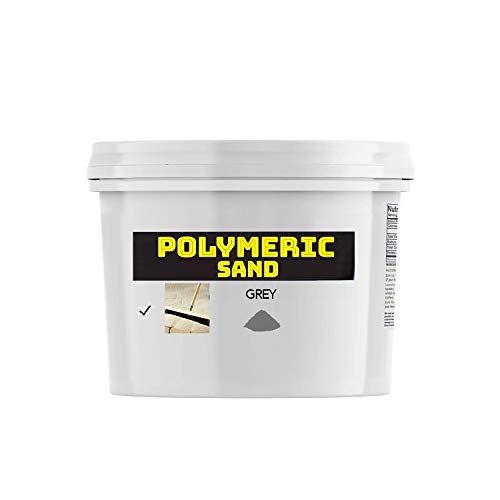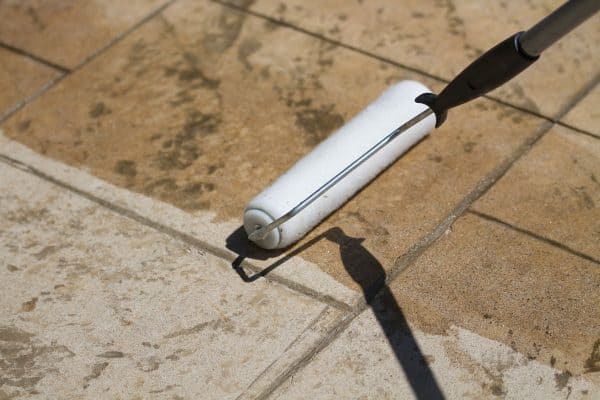Disclosure: We may get commissions for purchases made through links in this post.
Are you going to use sand to fill the paver joints? But what if there is no other sand available besides the play sand in which your child is playing? We're here to assist you. We thoroughly investigated whether or not play sand could be used as a paver joint filler.
It is not advisable to use play sand as a substitute for filling the paver joints. Although it may have similarities to actual paver sand, play sand does not guarantee the quality of the pavers. However, there are a lot of alternatives to play sand, like washed concrete or polymeric sand. Play sand is intended for a child's learning and it cannot give significant structure to the pavers.
It's important to choose the proper type of sand for the pavers. The sand underneath should be rough because the pavers exert a lot of external forces. The sand should be able to balance the movements by keeping the pavers in place. A glossy sand, which is usually the texture of play sand, can make the pavers frictionless, causing misalignment due to external impact. Keep reading to learn more about paver fill alternatives.

What Is A Play Sand?
Play sand is similar to regular sand, except that certain components, such as iron oxide, have been removed to allow children to play safely. This has undergone a thorough draining system to remove sharp debris and rocks. Pressing the sand until it softens is a step in the process of making play sand. In a nutshell, play sand is a disintegrated version of normal sand in which the minerals have been removed.

Play Sand Vs. Paver Sand
Paver sand is used to fill in the gaps between pavers, also known as joints. It's meant to keep the pavers stable in place. Additionally, it enhances the hold of pavers on the ground.
Let's further distinguish the differences between play sand and paver filler sand. See the highlights below:
- Paver sand is more durable than play sand. You can use paver sand for other purposes, like adding it to the cement mixture.
- Due to the elimination of minerals like iron, the efficiency of play sand has decreased compared to paver sand.
- Play sand does not have the ability of paver sand to hold the bricks in place.
- Play sand has less friction, which the pavers need to balance the impact of external forces and allow them to adjust to the movement of the ground.
- Play sand crumbles when wet. Unlike paver sand, which hardens and acts like cement when wet. Play sand can be washed out easily due to its smooth texture.
The distinction between play sand and paver sand is now clearer. It is wiser to use a paver sand for paver joints than to go for the weaker compound. Also, if you opt for colored sand, play sand can be more costly than paver sand.

Can You Mix Play Sand With Paver Sand?
Yes, in theory. The application of play sand to the mixture can act as an enhancer. However, you should not use only play sand. Play sand has the potential to degrade the quality of the paver sand. It has been altered so that it contains fewer compounds, such as iron. It can become soft when mixed with sand to fill in joints.
However, it is just optional to do it. Play sand should be kept in the sandbox rather than in the pavers.
Types Of Paver Sand
Paver sand is useful for securing pavers. It is being swept across the floor to fill in the gaps and keep the pavers in place. We're going to show you some paver sand alternatives to play sand.
Washed Concrete Sand
It is called washed simply because the sand is being screened to filter out the larger particles, leaving only the finest ones. Its holding power is strong and it is commonly used in major construction tasks.
Polymeric Sand

A polymeric sand mixture has a component of thick fluid that is really hard when dried. It's quite more expensive than concrete, as this is combined with polymer materials, like solid plastic.
See this Polymeric Sand on Amazon.
Silica Sand

It's a soft sand made of silicon and oxygen. It is used in the production of glass, water purification, pottery, and many other applications. Despite its softness, it can be used to join pavers.
See this Silica Sand on Amazon.
You should look for rough, fine sand among the options depending on the type of pavers you have. Remember that the purpose of the sand is to add friction to the surface so that the pavers stay in place better.
How To Install A Paver Sand
Contrary to popular belief, sweeping the paver sand throughout the entire area is insufficient. Instead, we recommend that you follow these steps.
- Clean the area. This might include cutting the grass.
- Prepare the tools such as dry sweeper, hammer, and safety gloves.
- Remember not to install sand on rainy day. It will be useless.
- Pour down the sand and spread it on the entire area using a sweeper. Pin the pavers with a hammer.
- Gently splash water to harden the sand. Let it dry.
It is better to apply a sealant to the surface. Sealant can aid in preventing grass growth. Do not mix up rain and splashing water to harden the sand. If you have not yet swept the sand to the paver joints, the rain may ruin the process. It has the ability to solidify sand in unexpected places, leaving hardened sand everywhere.

How Much Sand Is Needed For Pavers?
It is recommended that paver sand be at least half an inch deep. Measure the area of the ground to determine how much sand you'll need. Given that you only need to fill the paver joints and not the entire surface, 110 lbs of sand can cover up to 85 square feet. It is preferable to have extra sand for future use.
Should The Paver Sand Be Reapplied? And How Often?
The sand on paver joints is naturally washed out over time. However, keep in mind that the paver's underside is already bonded to the ground since the sand has been absorbed during the initial installation. You don't have to remove the pavers just to replace the sand.
Simply reapply the sand to the entire surface as discussed above. Because the excessive sand application can pollute the air, you should reapply it at least once every four months rather than once a month.

Why The Sand Keeps Coming Out Of Pavers?
There are several possible explanations for why sand continues to leak from pavers. You may have skipped a step or performed the installation incorrectly. However, we've compiled a list of the most common causes and solutions.
- The ground is slanted. It is critical that the pavers be laid flat on the ground to prevent sand from escaping. If this is the case, you may require professional assistance in repairing the uneven floor.
- You didn't use a sealant. It prevents sand from escaping and grass from growing. When the pavers are dry, simply apply a sealant to the paver joints.
- There is too much moisture. Excessive water may spit sand out of the joints, making the pavers slippery. Use a blow dryer and a cloth rag to remove the excess water.
- You used too much sand. It is obvious if the sand continues to come out for no apparent reason. Simply sweep it away or use a vacuum to get rid of the excess sand.
If your situation isn't on the list and you can't figure out why sand is escaping, consult a professional. There could be an unnoticed error in the installation or the type of sand that is causing the sand to come out.
What Can Happen To Pavers Without Sand?
If you don't sand the joints, the pavers might become loose and misaligned with one another. Due to a lack of support beneath them, the pavers can also suddenly spring up. Every time someone walks over the pavers, they might wobble underfoot.
Rain can easily make the pavers slippery, and floods can easily lift the pavers out of their positions. Worst-case scenario: grass and algae will grow faster. Insects will emerge as a result of this. To avoid these inconveniences, fill in the paver joints.
Does Paver Sand Stink?
Yes, paver sand will develop an unpleasant odor over time. Clean the pavers on a regular basis to avoid this. When rainwater is absorbed for an extended period of time, it can cause an updraft of air beneath the pavers to smell like soil.
Furthermore, if you have pets who pee on the pavers, it can be extremely stinky. To make the ground smell better, clean it with a scented detergent. For healthier air, simply use a non-bleach scent.
See this Scented Cleaner on Amazon.
A Safe Play
You should realize that play sand is can be risky when used as paver fill. Play sand is not advisable to use on paver joints. It serves a different purpose. Play sand is for learning, while paver sand is for securing.
Want to learn more? Just check these out!




![Vibrant Red Paver Stone Path, Can You Spray Paver Sealer? [How To Apply It]](https://pavingplatform.com/wp-content/uploads/2022/04/Vibrant-Red-Paver-Stone-Path-600x400.jpg)
![Properly laid out red pavers for a garden, Can You Tint Paver Sealer? [And How To]](https://pavingplatform.com/wp-content/uploads/2022/04/Properly-laid-out-red-pavers-for-a-garden-600x400.jpg)
